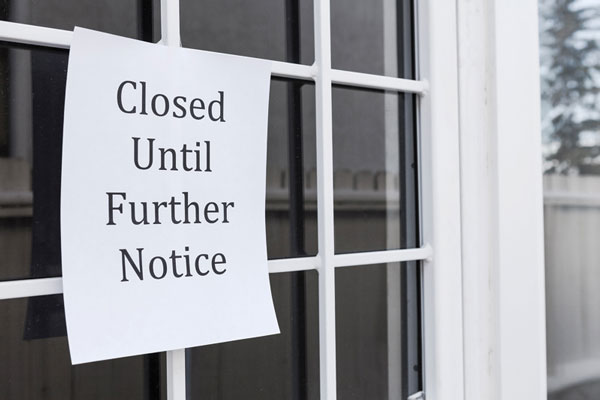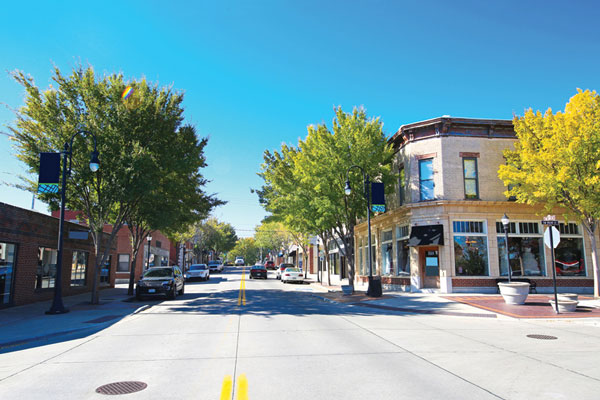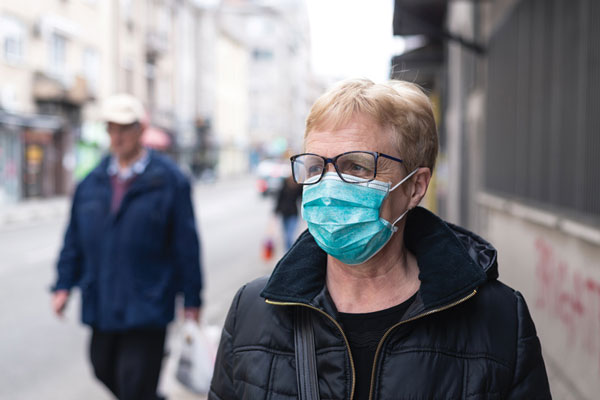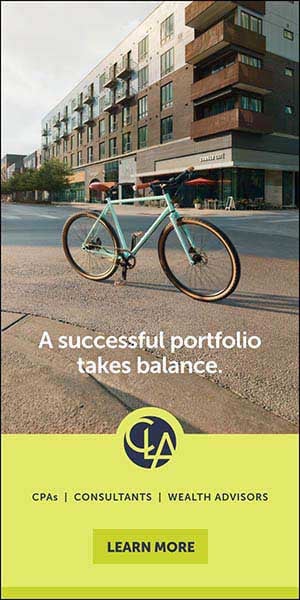'This is Not a Financial Crisis. This is a Natural Disaster.'

The coronavirus hit the economy and commercial real estate like a hurricane.
The coronavirus pandemic that first erupted in China late in 2019 has now spread around the world, causing thousands of deaths and straining the capacity of health care systems in many countries.
Currently, there are only experimental treatments for COVID-19, the respiratory disease caused by the novel coronavirus, and a vaccine likely won’t be available until at least 2021. While the disease’s progression appears to be slowing thanks to extraordinary public health measures taken by governments and individuals, many infectious-disease experts fear that a second wave will strike in the fall.

Beginning in March, governments across North America ordered non-essential businesses to close to help reduce the spread of the coronavirus. Getty Images
But illness and loss of life aren’t the only disastrous effects of the coronavirus. In the U.S. and around the world, the pandemic’s economic aftershocks brought an end to a long bull market and abruptly plunged the U.S. economy into a deep downturn as entire states mandated business closures and “social distancing” to control the spread of COVID-19. Those shutdowns and unprecedented job losses, in turn, threaten the commercial real estate industry, which depends on thriving businesses that can pay rent for the space they occupy.
“This is unlike anything we’ve ever experienced,” said Hessam Nadji, CEO of Marcus & Millichap, during an interview with Bloomberg P&L. “Most of our clients and everyone participating in our industry is first and foremost concerned about the health of their employees and their families. But it’s very difficult to separate the emotional component of that with the business component of that, which is unusual.”
Timothy H. Savage of NYU’s Schack Institute of Real Estate, who is the author of NAIOP’s office and industrial demand forecasts, compared the pandemic’s effects to a catastrophe such as a hurricane — but one that hits everywhere at once.
“We have to recognize that this is not a financial crisis,” Savage said during a recent NAIOP webinar. “This is a natural disaster. It’s a natural disaster in which it is not the physical capital that is being affected — it is the human capital. It is each one of us essentially isolating ourselves, and that directly impacts the economy.”
Before COVID-19 Hit
John Chang, national director of research services with brokerage and investment services firm Marcus & Millichap, said the U.S. economy was strong before the coronavirus crisis began accelerating here in early March.
“Job creation, corporate profits, the unemployment rate, consumption levels, interest rates and inflation were all in a very good position,” he said during a recent NAIOP webinar. “We had 113 months of continuous job gains through February.”
Anirban Basu, chairman and CEO of Baltimore-based economic consultants the Sage Policy Group, noted during a recent webinar for NAIOP D.C.-Maryland that the U.S. added 22 million jobs during the long recovery from the Great Recession. Thanks to the exceptional job-creation performance of large metropolitan areas in the U.S., unemployment had held below 4%, a 50-year low.
According to NAIOP’s “Economic Impacts of Commercial Real Estate, 2020 Edition,” published in February, the U.S. economy grew 2.3% in 2019 and rose 2.9% in 2018. The report noted that the positive momentum was the result of “the combination of continuing stimulus from the Tax Cuts and Jobs Act of 2017, increased federal government spending, rising consumer spending, and strong job and personal earnings growth.”
An Economic Gut Punch
And then the pandemic hit in March. As deaths and hospitalizations skyrocketed, state and local governments ordered social-distancing measures and business closures. Millions of white-collar employees began working from home. Universities banned students from campuses and instituted distance learning, and primary and secondary public and private schools followed suit. Collegiate and professional sports teams canceled their seasons. Travel and business activity ground to a halt. Fueled by the massive economic uncertainty surrounding the pandemic, the Dow Jones Industrial Average, which almost reached 30,000 in February, plunged to 18,591 on March 23 after days of record losses.
“This is a planned, organized, partial shutdown of the U.S. economy in the second quarter,” James Bullard, president of the St. Louis Fed, told Bloomberg News. “It is a huge shock, and we are trying to cope with it and keep it under control.”
Some data points illustrate the impact of the unprecedented shutdown.

The revival of shuttered retail districts will play a crucial role in the overall economic recovery from the coronavirus pandemic. Getty Images
Box Office Mojo, which analyzes movie ticket sales in the U.S., reported that box office totals fell from $120 million for the week of March 6-12 to just $5,179 for the week of March 20-26. And an analysis of transaction data by Womply, a provider of software and business services, shows that during the week of March 25, hotel revenue fell 78% from the previous year, restaurant revenue declined 59%, and revenue for bars and lounges dropped 52%.
“The economic carnage is severe,” Stuart Gabriel, director of the Richard S. Ziman Center for Real Estate at UCLA, said during a recent webinar. “It is unlike anything that we have ever seen or known, and it is outside of any statistical range.”
Those losses, as well as others across many service industries, sent jobless claims skyrocketing to more than 30 million in April, the largest figures since the U.S. Department of Labor began reporting claims in 1967. Unemployment spiked to 14.7% in the U.S.
In late April, the Commerce Department reported that the U.S. gross domestic product (GDP) fell 4.8% in the first quarter, the sharpest decline since the global financial crisis in 2008. Many economic experts predict a much steeper GDP decline in the second quarter. For example, Spencer Levy, chairman of Americas research and senior economic advisor for CBRE, told attendees at a NAIOP webinar that he sees second-quarter GDP shrinking by 20%; it could end up down 3% for the year. Goldman Sachs sees a 24% GDP decline for the second quarter, and Morgan Stanley predicts it will fall 30%. The Congressional Budget Office is forecasting a drop of 39.6% in the second quarter and a decline of 5.6% for the year.
The massive slowdown in business activity is also affecting tax revenues at the state level. Urban Institute Senior Researcher Lucy Dadayan told Axios in May that collections would be down between 20% and 50%, depending on the state. California is facing a $54.3 billion budget shortfall through 2021. New York state is projecting a shortage of $13.3 billion.
Government Gets Moving
In response to the crisis, the federal government took aggressive action in March to help shorten a recession and mitigate its effects on workers, consumers and the commercial real estate industry.
The Federal Reserve cut interest rates to zero, made large bond purchases to shore up credit markets and took additional measures to backstop commercial lending. The Federal Reserve began using the Term-Asset Backed Loan Facility to purchase agency-backed CMBS (mostly comprised of multifamily mortgages) in March and subsequently expanded these purchases to non-agency CMBS in April. In late March, several mortgage REITs reported that banks were submitting margin calls on non-agency CMBSbacked repurchase agreements, impairing the REITs’ liquidity and leading them to freeze issuance of new debt. The Federal Reserve’s actions may help to restore liquidity in the CMBS market.
“They’re going to do whatever it takes to maintain the liquidity of both the financial markets and backstopping businesses with lines of credit,” Chang said. “That includes large businesses, small businesses, municipal bonds and credit facilities for sectors of the economy that are most at risk.”
Chang said these unprecedented actions by the Fed demonstrate the lessons learned from the global financial crisis of 2008.
“At that time, they were very tactical in their approach,” he said. “They tried to surgically backstop certain pieces of the economy. This time around, they’re unleashing everything in the very beginning, and they’re continuing to make all the resources available that the economy will need to sustain itself through this shock.”
Legislation to expand sick leave and a $2.3 trillion stimulus bill that includes loans to adversely affected industries and small businesses, support for health care systems and local governments, supplements to unemployment benefits and direct payments to individuals could keep vital services operating and help workers and businesses weather the recession.
Levy said that U.S. authorities are pumping the equivalent of four times the expected second-quarter decline into the system. For perspective, the stimulus bill passed in response to the 2008 global financial crisis was about $800 billion.
“They’re not just trying to assist individuals and households,” Chang said. “They’re also trying to protect the businesses as well. When we get through this, it’s going to be very important that we have those businesses in place with staff in order to support a recovery and growth cycle. The government is being very aggressive about getting out in front of the situation as opposed to trying to respond after things have already hit a tough patch.”
Nadji told Bloomberg that the most important part of the stimulus package from the perspective of the commercial real estate industry is the hundreds of billions that have been set aside for small-business loans and to help large companies.
“As much help as can be delivered to companies to stay afloat during the worst of this health crisis in order to limit employee layoffs, because that has to do with tenants, and tenants have to do with occupancies of commercial real estate,” he said.
Savage said one major difference between the coronavirus pandemic and the recession of 2008 is how rapidly equity and labor markets reacted to the bad news.
“During the height of the global financial crisis, we were losing about 800,000 jobs a month,” he said. “Recent job losses dwarf that figure. So on the fiscal side, if you look at the core elements of the stimulus bill that has been passed, it is addressing those sorts of issues. It is addressing things like unemployment insurance, the duration of unemployment insurance, the amount people are compensated for having lost jobs in order to provide income in what is a short-term disruption to labor markets.”
But no matter how large the government’s intervention, the speed and shape of an economic recovery will depend on how widely the virus spreads and how long it takes to contain the pandemic.
“Ultimately, who are we counting on? Regeneron. Gilead Sciences. Merck. Pfizer. Bayer AG,” Basu said. “That’s who’s going to solve this economic problem. It’s not going to be solved in a bank or in a brokerage or on the trading floor of the New York Stock Exchange. It’ll be solved in a laboratory. The brilliant minds that work in global life science, they’re going to save the day.”
Effects on Commercial Real Estate
Commercial real estate is a critical part of the U.S. economy. According to NAIOP’s “Economic Impacts of Commercial Real Estate, 2020 Edition,” it contributes $1.14 trillion to GDP, generates $396.4 billion in personal earnings and supports 9.2 million jobs.
Most sectors of the commercial real estate industry are better positioned to endure the current crisis than they were during the recession that accompanied the 2008 financial crisis. However, the outbreak and its effects will differ sharply across product types and geographic markets.
Trepp, a provider of information, analytics and technology to the commercial real estate market, predicted in March that the overall default rate across all commercial mortgages could rise from 0.4% to 8%. The default rate in lodging could approach 35%, and retail could climb to 16%. However, offie, industrial and multifamily are expected to see much lower numbers.
In addition to potential risks to existing real estate assets, the outbreak has disrupted new development deals and may pose a risk to ongoing construction projects. Matt Burke and Cathy Cunningham, writing for Commercial Observer, note that lenders are still lending and investors are still making deals, but all parties are being more conservative than they once were and real estate is being repriced at lower values.
Levy said most of the bidders who have fallen off have been institutional, not private. Institutional investors are pulling back because their portfolios are suffering losses.
Levy said he’s seeing banks taking on more forbearance for mortgages for many property types. Levy also said CBRE has seen an increase in the number of requests for price reductions, also known as repricing asks or retrade asks.
“Those accelerated in [late March],” he said. “Many of them were above 5%. About 50% of our deals are asking for this 5%-plus retrade.”
While Levy thinks that repricing activity won’t be worse than in other periods of market distress, he said he’s seen a lot of deals completely collapse. They’ve either fallen out of contract, or folded when “material adverse change” clauses were invoked.
The coronavirus may also increase costs and risks for all types of commercial construction, particularly for projects that rely on materials or equipment shipped from China. In its H1 2020 Construction Outlook, JLL notes that the U.S. imports between one quarter and one third of all construction products from China.
Illnesses and quarantines could also disrupt the construction labor supply in areas affected by the virus, resulting in significant project delays. According to Construction Dive, although a few localities like Boston have ordered a halt to all construction, ongoing construction projects continue to operate largely unaffected by government restrictions across most of the U.S. However, as widespread construction bans take effect, they could bankrupt many construction firms, according to Association of General Contractors CEO Stephen Sandherr.
Rising construction costs and labor disruptions could be particularly painful for projects that are operating on thin margins. Even developers with conservatively financed projects in otherwise healthy sectors may benefit from working proactively with lenders, contractors and tenants to develop contingency plans for disruptions related to the outbreak.
When — and How — Will Markets Recover?
Levy said it’s not useful to compare the coronavirus pandemic to past market crashes such as the 2001 post-9/11 tech bubble or the 2008 global financial crisis, which both led to recoveries that took years to play out.
“I think a good comparison could be the SARS period in 2003 in Asia,” he said.
During the SARS outbreak, economies in Asia saw a six-month material drop in transaction activity and a fall in values, followed by a rapid bounce-back because there were no fundamental flaws in the economy. Citing a Goldman Sachs analysis of GDP changes during the 2003 SARS outbreak in China, Hong Kong and Canada, Basu said there is almost always a sharp contraction in activity during pandemics, then a strong rebound. He said it’s possible that could happen during this cycle. Low interest rates and the amount of government stimulus money in the pipeline will be a big help.
“I’d characterize this as short and vicious,” he said. “But the short part will be a public health issue — how quickly we can flatten the curve.”
But in April, Basu warned the Baltimore Business Journal that the initial rebound probably won’t be a complete recovery, either.
“I liken it to a game of musical chairs,” he said. “When the economy was good, there were a lot of chairs. In this crisis, a lot of the chairs were removed, and it’s going to take some time to get back to the number of chairs we had.”
Levy predicted that a recovery could begin in the third quarter of the year.
“It’ll be the worst second quarter in the history of the United States, but with a rapid bounce-back thanks to the massive monetary and fiscal stimulus,” he said. “That will give rocket fuel to businesses to come back.”

Masks could become ubiquitous in North America’s public spaces as businesses open back up and citizens take measures to protect themselves from the coronavirus. Getty Images
Savage echoed those sentiments, citing the 1957 flu pandemic that killed 1.1 million worldwide and 116,000 in the U.S. In the fourth quarter of 1957, the U.S. economy contracted by about 4%. It shrunk by 10% in the first quarter of 1958, but fully recovered by the end of the year.
“It was very much a V-shaped recovery in a pandemic that is barely mentioned in the history books but is recorded in the data,” Savage said. “The coronavirus is not the global financial crisis. Remember, that arose in a situation of considerably more private leverage than we have today, and the protracted recovery required a fair amount of time for that leverage to work through the system. This is a very different situation.”
However, there is a risk for a much longer U-shaped recovery, especially if the economic impacts of extended shutdowns and high unemployment linger. A worse scenario would be a W-shaped recovery. That’s where the economy makes a rapid initial rebound as businesses start to come back online, but then plummets again if a second wave of coronavirus hits.
“The biggest risk factor out there is called a double dip,” Levy said in reference to a possible W-shaped recovery. “It means we get the all-clear notice from the authorities, and then they have to reshut the gates again soon after when the infection is clearly not under control. That would be a disastrous scenario.”
Shawn Moura, Ph.D., is research director at NAIOP. Trey Barrineau is managing editor, publications, for NAIOP.
A Negative Outlook from Business LeadersA YPO Chief Executive COVID-19 Global Survey of 3,534 CEOs in 109 countries that was conducted in April shows the impact of the coronavirus pandemic on business leaders’ outlooks for the coming year:
|
‘Location, Location, Liquidity’: An Economist Weighs In On the PandemicDuring a recent webinar for NAIOP National Forums members, economist Mark Dotzour shared his thoughts on how the coronavirus pandemic will affect the economy and commercial real estate. Here’s a sample of his comments: 
Dr. Mark G. Dotzour served for 18 years as chief economist of the Real Estate Center at Texas A&M University. He has given more than 1,600 presentations, and his research findings have appeared in the Wall Street Journal, USA Today, Money Magazine and Business Week. “We’ve all heard that phrase ‘location, location, location.’ I’m going to modify that for the 2020s and say it’s ‘location, location, liquidity.’ You can make the perfect location decision and make a bad decision with liquidity, and it changes your whole outlook.” “The Wall Street Journal recently reported that 900 firms are looking to enter the distressed-asset space with almost $300 billion ready to go. There’s going to be a lot of dry powder coming into this business, so if there is any downward pressure on pricing, it’s going to be mitigated by an overwhelming response from people wanting to mop up the mess.” “Right now, real estate prices are unknown. I don’t think it’s proper to say that real estate prices have dropped a lot. … All I see right now is nobody can predict far enough in the future in terms of cash flow to put a value on a building right now. That will change over time. … It’s going to be a while before we get enough transactions to know what has happened to property values.” “The biggest question in my mind is how long is it going to be before we feel comfortable to do anything like go to a restaurant, go to a convention, take a vacation or go to a basketball game? Another issue is, can our government force us to abandon our businesses every year? If we have another go-round of COVID next fall, will we have to close again?” “I’m bullish on warehouse space. This idea of just-in-time manufacturing, where you have just a barebones amount of inventory that has to be refilled every couple of weeks, I think people are going to start reconsidering that, and they’re going to start having more warehouse space with more inventory so they don’t get caught off guard.” “Cap rates are going to be up and down. Short-term interest rates could stay near zero for at least five years. The 10-year Treasury will be lower for longer. There’s going to be a huge search for yield that’s going to cause people to want to own real estate. A 5% yield on some kind of real estate opportunity is going to look like a gold mine compared to the bond market. All this volatility in stocks and bonds makes people more nervous and directs more of their enthusiasm toward real estate. That’s the upside. The downside is a government-sanctioned rent holiday for all kinds of real estate that throws an additional piece of risk into every kind of real estate. Every piece of real estate in America has a slightly higher risk component to it because of the rent holiday and the threat the government might shut down businesses who are your tenants again.” “I will say that I’m more bullish on commercial real estate investment in secondary and tertiary markets because the yields are higher. The big markets got overshot and the yields got too low, so I’m still bullish on secondary and tertiary markets. The urban vibe has lost its luster. I could see some additional demand for people moving to smaller cities. … I also feel like there’s more demand for open spaces in the suburbs.” “I think the supply chain is getting ready to change big time. I’ve been saying for the last five years that China is a subcontractor for America. Sure, they’re a big global power, but they’re a big global power because we chose to buy all our stuff from them. We have financed their big global power move. But the problem is when you make a decision to have one supplier and it’s in trouble, then you’re in trouble. This was already happening last fall. Businesses were starting to reposition parts of their supply chains to other countries, and that’s going to continue. That’s going to change the port structure, too. Not just L.A. and Long Beach coming in from China; there’s going to be goods and production redistributed around the world. That will open up more demand. If you live in a city in the South like Charleston or Savannah, the chances are you’re going to have more business there going forward.” “Americans do not tolerate deferred gratification. We’ll either conquer this virus or get used to it. Americans don’t hide in their houses for very long.” |




